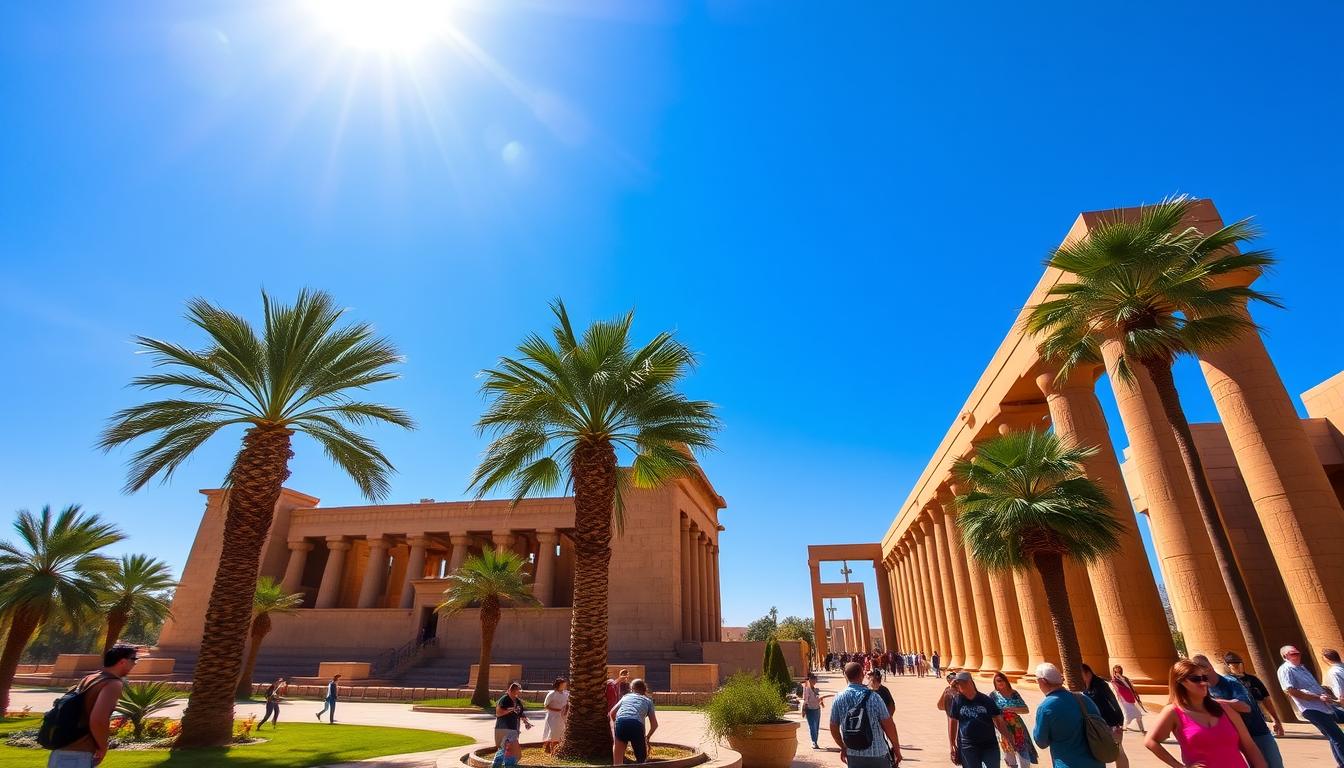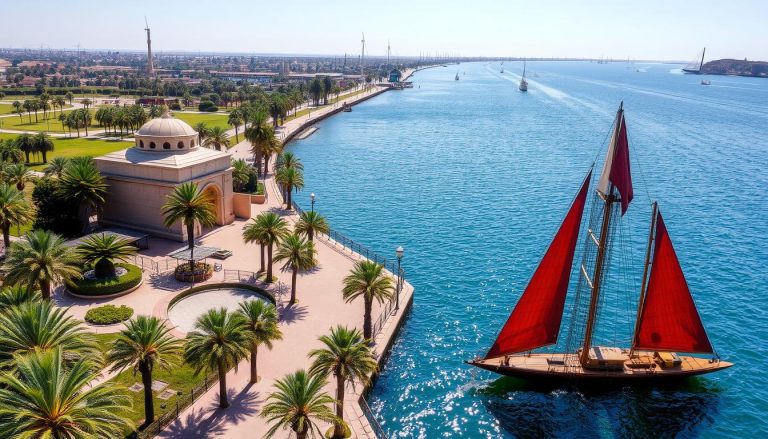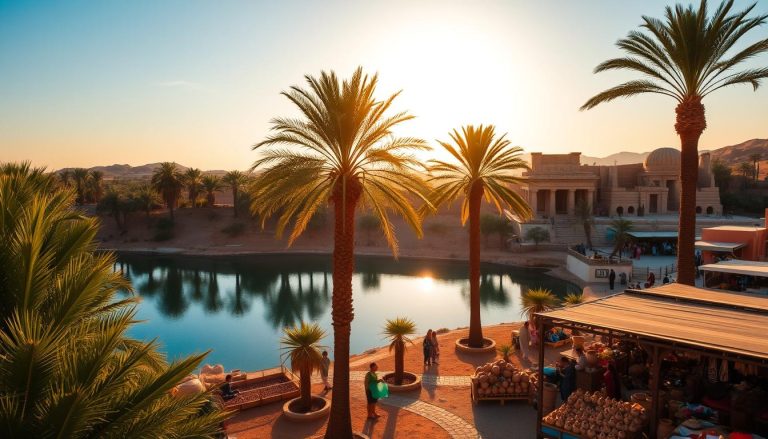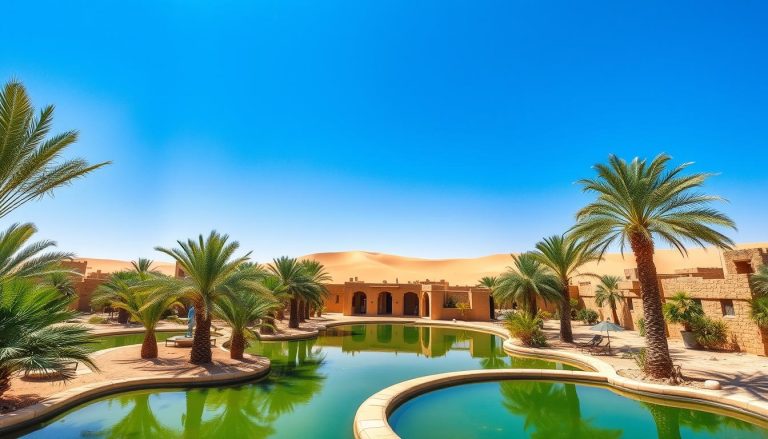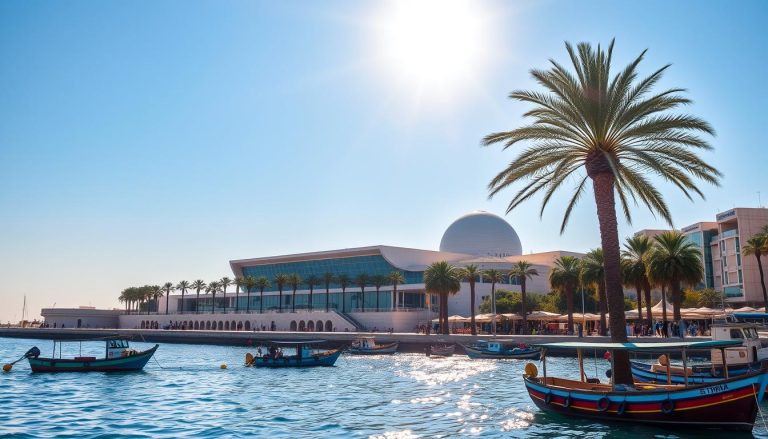Imagine standing amidst ancient Egyptian wonders. The air whispers tales of a civilization that fascinates the world. Welcome to Luxor, a city where time seems to have forgotten, but now you can discover it all. But what makes Luxor a must-visit? What hidden gems await the curious traveler?
Luxor, once known as Thebes, is an open-air museum. It showcases the best of ancient Egyptian culture. The city is divided into the East and West Banks of the Nile. It boasts iconic sites that rival Cairo’s wonders.
From the awe-inspiring Valley of the Kings to the Luxor Temple, Luxor offers a unique chance. You can immerse yourself in Egypt’s past grandeur.
Key Takeaways
- Luxor is an open-air museum showcasing ancient Egyptian wonders
- Iconic sites like the Valley of the Kings and Luxor Temple are must-see attractions
- Luxor offers a unique opportunity to experience ancient Egypt’s grandeur
- The city is divided into the East and West Banks of the Nile River
- Luxor’s attractions rival those found in Cairo, making it a top destination in Egypt
Essential Guide to Visiting Luxor
Luxor is an ancient city by the Nile River in Egypt. It’s known for its history, culture, and amazing buildings. When planning your trip, think about the best time to go and how to get around.
Best Time to Visit
The best time to see Luxor is from October to April. The weather is mild and perfect for exploring. Summer is too hot, making it hard to enjoy the sights.
Visit during the cooler months to see the ancient sites comfortably.
Getting Around Luxor
Getting around Luxor is easy with many options. Taxis and the Careem app are popular. For a unique experience, hire a car and driver.
Walking or biking lets you enjoy the city at your own pace.
Local Currency and Tips
The local money in Luxor is the Egyptian pound (EGP). Tipping is common, and some places only take cash. Dress modestly, covering your shoulders and knees.
Alcohol is only allowed in licensed places. Drones need permission from the Egyptian Ministry of Defense.
| Attraction | Entrance Fee |
|---|---|
| Karnak Temple | 220LE (~£5/ €6 / $7) |
| Luxor Temple | 180LE (£5 / €5 / $6) |
| Valley of the Kings | 260LE (130LE for students) |
| Mortuary Temple of Hatshepsut | 160LE (~£4 / €4.70 / $5) |
Follow these Luxor travel tips for a great trip. The best time to visit Luxor is in the cooler months. With the right transport and knowledge, you’ll enjoy the ancient wonders.
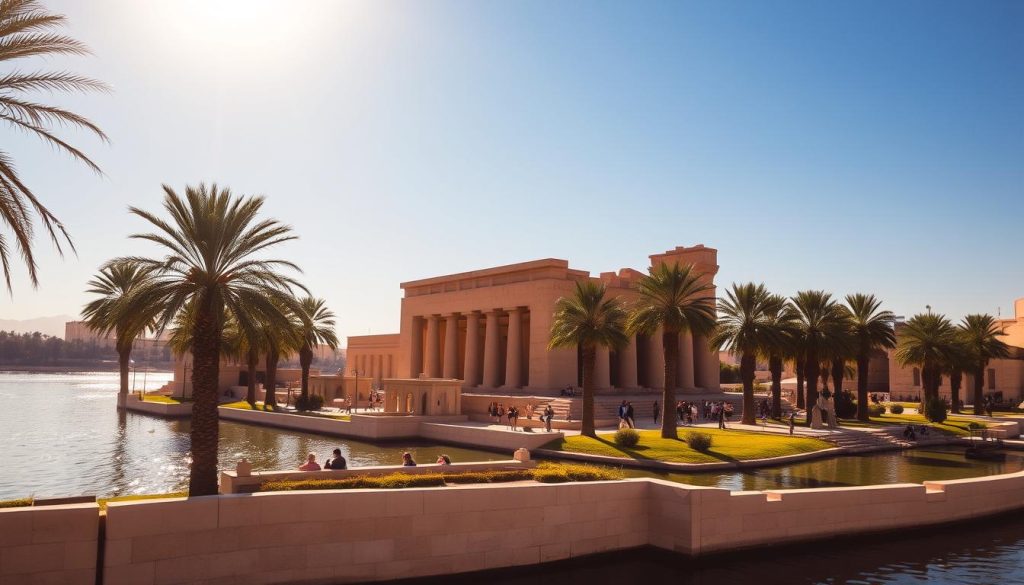
Karnak Temple Complex: Ancient Grandeur
Get ready to be amazed by the Karnak Temple Complex, the biggest temple complex in the world. Located in Luxor, Egypt, it shows the skill and faith of ancient Egyptians. Built over 1,000 years, it shows how ancient Egyptian architecture changed and their gods’ lasting impact.
The Great Temple of Amun is at the complex’s heart. It has the famous Avenue of Sphinxes, the huge Great Hypostyle Hall, and the tall Obelisk of Thutmosis I. The Temple of Khons and the Festival Temple of Tuthmosis III are also key parts of this vast site.
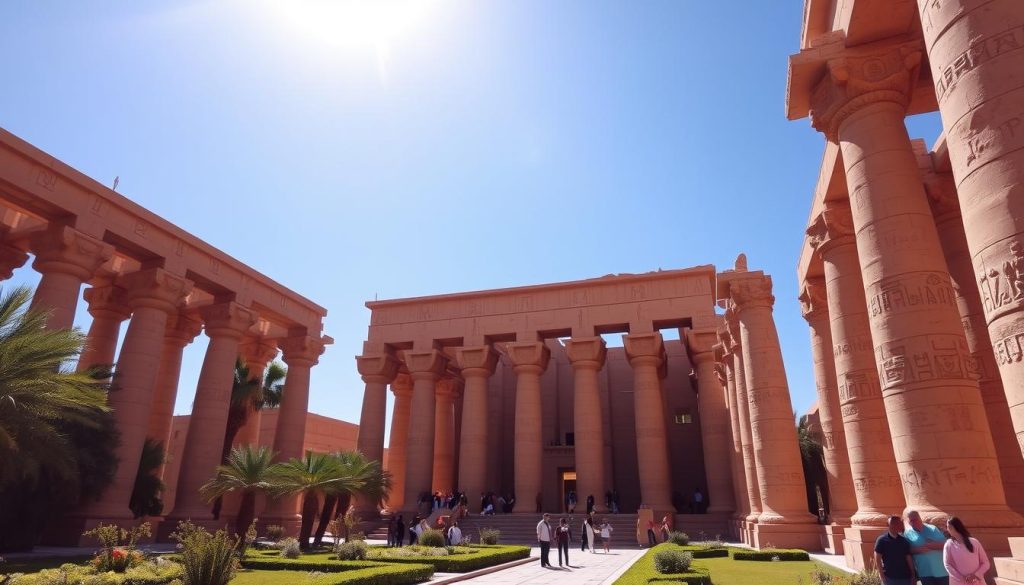
People can visit the Karnak Temple Complex from 6 AM to 5:30 PM every day. The entrance costs 200 EGP and includes the Karnak Open-Air Museum. This journey lets you see the ancient Egyptian architecture that has amazed people for centuries. Whether you love history or just amazing buildings, the Karnak Temple is a top Luxor attraction that will stay with you.
| Key Facts about Karnak Temple Complex | Details |
|---|---|
| World Heritage Site | Designated as a UNESCO World Heritage site in 1979 |
| Compound Temples | Dedicated to the Theban triad: Amun, Mut, and Khonsu |
| Construction Period | Built over 1,000 years, spanning the 12th to 20th dynasties |
Valley of the Kings: Royal Tombs and History
The Valley of the Kings is on the west bank of the Nile River in Luxor. It’s a place filled with ancient secrets of Egypt’s pharaohs. Over 60 royal tombs from the 18th, 19th, and 20th dynasties are buried here.
Notable Royal Tombs
Many tombs in the Valley of the Kings are impressive, but some are more famous than others. The tomb of Tutankhamun, found in 1922, is the most famous. It shows the young pharaoh’s lavish burial.
Other famous tombs include those of Ramesses II, Seti I, and Ramesses VI. These tombs are grand and decorated with great detail.
Visiting Tips and Photography Rules
Planning is key when visiting the Valley of the Kings. Only a few tombs are open at a time. This is to protect the wall paintings.
Photography rules vary, so check before you go. To avoid crowds and heat, visit early in the morning.
Best Time for Exploration
The best time to visit is from October to April. The weather is cooler, making it easier to explore. Early morning visits help you avoid crowds and heat.
The Valley of the Kings is a key spot for anyone interested in ancient Egypt. Its tombs, art, and stories make for an unforgettable visit.
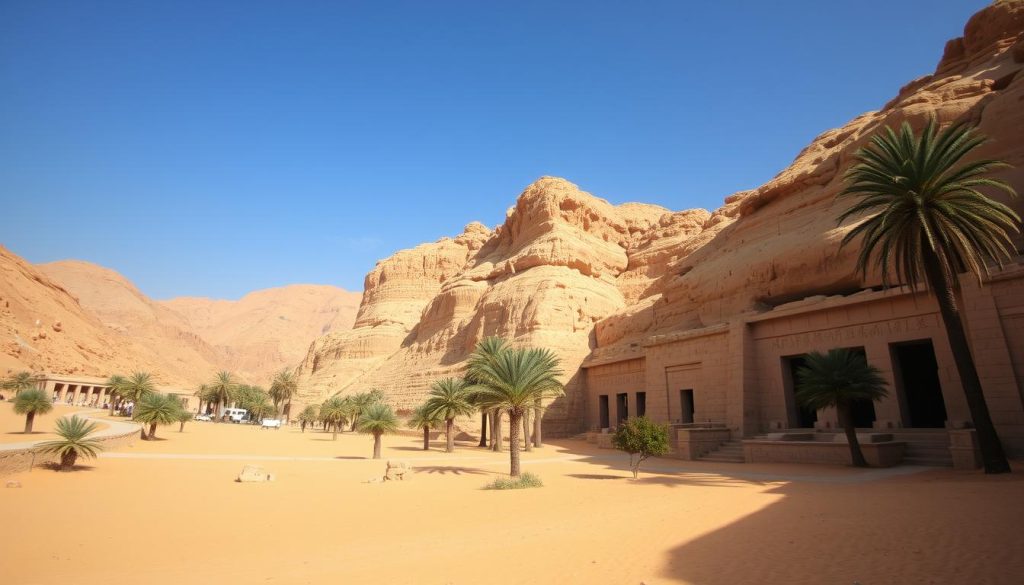
| Tomb | Notable Features | Ticket Price |
|---|---|---|
| KV9 (Ramesses V & VI) | Known for its vivid wall paintings | 180 EGP |
| KV17 (Seti I) | One of the best and most colorful tombs | 1,800 EGP |
| KV62 (Tutankhamun) | Discover the young pharaoh’s mummified body | 500 EGP |
Luxor Temple: Architecture Through the Ages
In the heart of Luxor, the Luxor Temple is a marvel of ancient Egyptian architecture. It was built around 1400 BCE. Many pharaohs, like Amenhotep III, Ramses II, and Tutankhamun, contributed to its construction.
The Grand Colonnade is a highlight, with its massive columns. The Sun Court of Amenhotep III and the Avenue of Sphinxes add to the temple’s grandeur. They invite visitors to experience ancient Egyptian culture.
The temple looks stunning during the golden hours. The setting sun highlights the carvings and structures. It’s open from 6 AM to 10 PM, with a 160 EGP entrance fee. This allows visitors to see it at different times.
The Luxor Temple complex also has the Mosque of Abu el-Haggag. It shows the site’s importance through the ages, even in the Islamic period.
“The Luxor Temple is a true masterpiece of ancient Egyptian architecture, showcasing the ingenuity and artistic prowess of its builders.” – Egyptologist, Dr. Amira Saeed
The Luxor Temple is a must-see for anyone interested in ancient Egyptian architecture. It offers a mix of history, architecture, and stunning Nile River views.
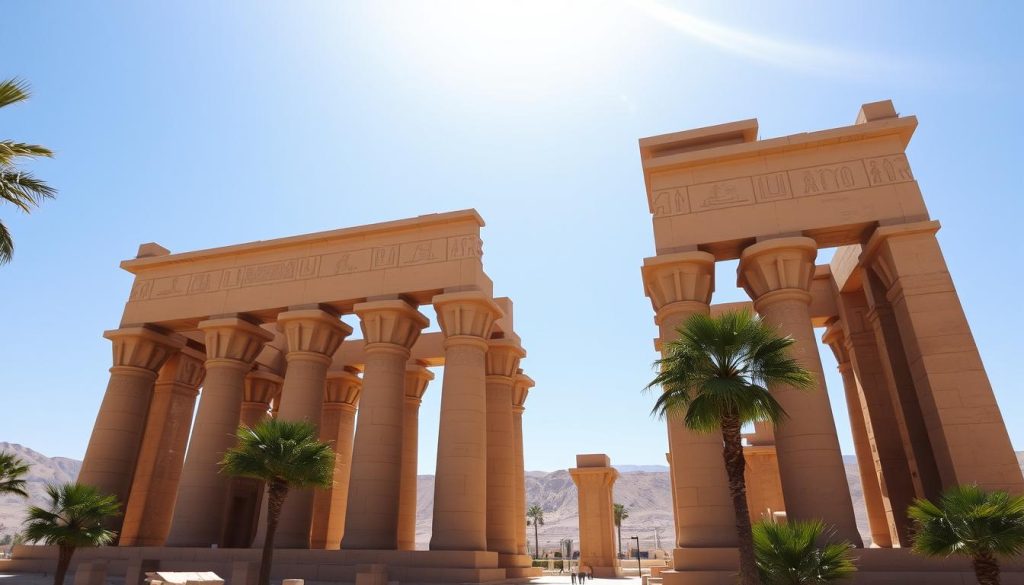
Temple of Hatshepsut: Marvel of Ancient Engineering
The Temple of Hatshepsut is set in the cliffs of Deir el-Bahri. It shows the amazing skills of ancient Egypt’s builders. This temple was built by Hatshepsut, a powerful queen.
Architectural Features
The temple’s design is both symmetrical and grand. It has three terraces and ramps that guide visitors. The western side shows reliefs of Hatshepsut’s birth and her trips to Punt.
Historical Significance
Hatshepsut was a key figure in ancient Egypt’s history. She built this temple to show she was a true pharaoh. The temple’s design and reliefs show her ambition and legacy.
Visitor Information
The Temple of Hatshepsut is on the West Bank of the Nile, near Luxor. Visitors can see its terraces and marvel at its design. It’s a great way to learn about Hatshepsut’s life and reign.
Colossi of Memnon and Medinet Habu
Explore beyond Luxor’s busy streets to find two ancient wonders: the Colossi of Memnon and the Medinet Habu.
The Colossi of Memnon are two huge stone statues, each about 60 feet tall. They once stood at the entrance of Amenhotep III’s temple. Even though the temple is gone, these statues show the ancient Egyptians’ architectural skill.
Not far away, the Medinet Habu awaits. It’s Ramses III’s mortuary temple. Here, you can see detailed carvings of battles and rituals. The temple is a mix of old and new, showing how Egyptian architecture changed over time.
The Colossi of Memnon and Medinet Habu are often missed by travelers. But they are key to understanding Luxor’s rich history. Walking through these sites, you’ll feel the magic of ancient Egypt.
“The Colossi of Memnon and Medinet Habu are a testament to the enduring legacy of ancient Egyptian civilization, inviting visitors to step back in time and witness the grandeur of a bygone era.”
Luxor Museums and Cultural Experiences
Luxor is more than just temples and tombs. It has two museums that show Egypt’s rich culture. The Luxor Museum and the Mummification Museum are must-sees.
Luxor Museum Highlights
The Luxor Museum has amazing artifacts from the area. You can see the Royal Mummies of Ahmose I and Ramses I. It’s open from 9 AM to 4 PM and 5 PM to 10 PM. The entrance fee is 140 Egyptian pounds.
Mummification Museum
The Mummification Museum focuses on mummification. It’s a smaller but fascinating place. Here, you can learn about preserving the dead in ancient Egypt. It’s open from 9 AM to 1 PM and 5 PM to 8 PM. The entrance fee is 100 Egyptian pounds.
Both museums add depth to Luxor’s ancient sites. They make the cultural experience richer. Whether you love history or just want to explore ancient Egypt, these museums are essential.
“Luxor is often referred to as ‘the biggest open-air museum’ and is considered to own about one third of the world’s history.”
Hot Air Balloon Rides and Nile Experiences
Experience Luxor from above in a hot air balloon. See the city’s beauty from a new angle. The hot air balloon rides take you over the Nile River and the Valley of the Kings at sunrise.
The flights last 35-45 minutes. They are guided by skilled pilots and watched by air traffic control. Up to 70 balloons fly together in peak seasons, making it a top activity in Luxor.
For a calm Nile River journey, try a Nile River cruise. Choose from short felucca rides to long cruises between Luxor and Aswan. These trips let you see ancient sights and enjoy Egyptian sunrise views from the water.
| Hot Air Balloon Rides in Luxor | Nile River Cruises |
|---|---|
|
|
Whether you fly high in a hot air balloon or cruise the Nile, these experiences are unforgettable. They will give you lasting memories of Luxor, Egypt.
Conclusion
As your journey through Luxor, Egypt comes to an end, it’s clear that this ancient city offers a unique glimpse into the captivating history and enduring legacy of the pharaohs. The Karnak Temple Complex, with its towering columns and intricate hieroglyphics, is a grand sight. The Valley of the Kings, with its hidden treasures, also showcases the wonders of ancient Egyptian civilization.
Exploring Luxor, you’ll marvel at the architectural feats of the Temple of Hatshepsut. You’ll also explore the diverse collections of the Luxor Museum. And, you can experience the thrill of a hot air balloon ride over the Nile River. Luxor provides a multifaceted experience that immerses you in the rich cultural tapestry of Egypt.
As you depart Luxor, let the memories of the Colossi of Memnon, the Luxor Temple, and the serene Nile River cruises linger. These memories will serve as a testament to the timeless allure of this captivating destination. Luxor’s ability to transport you back in time is truly unparalleled, making it a must-visit for anyone seeking to immerse themselves in the wonders of ancient Egyptian history.
